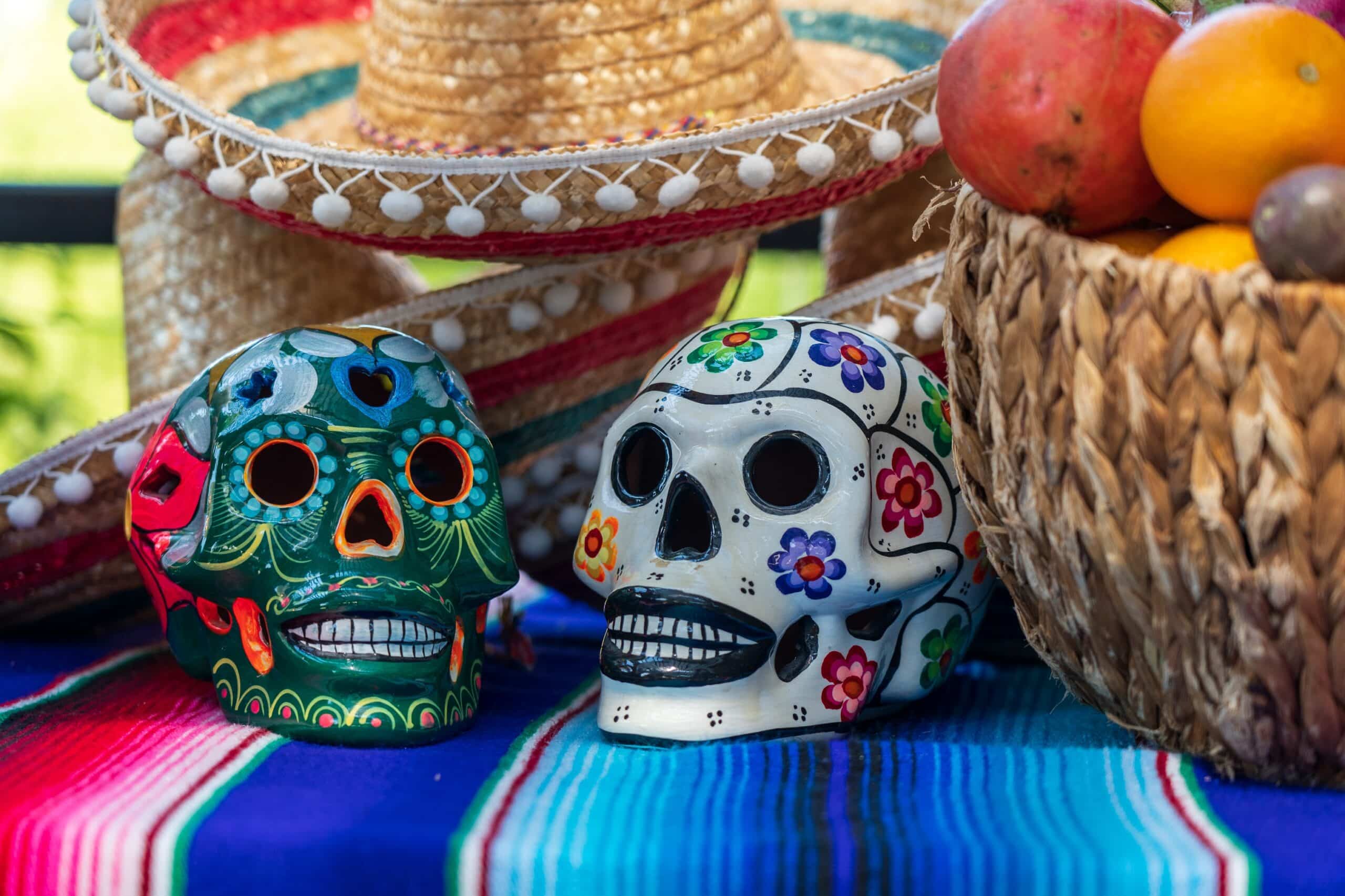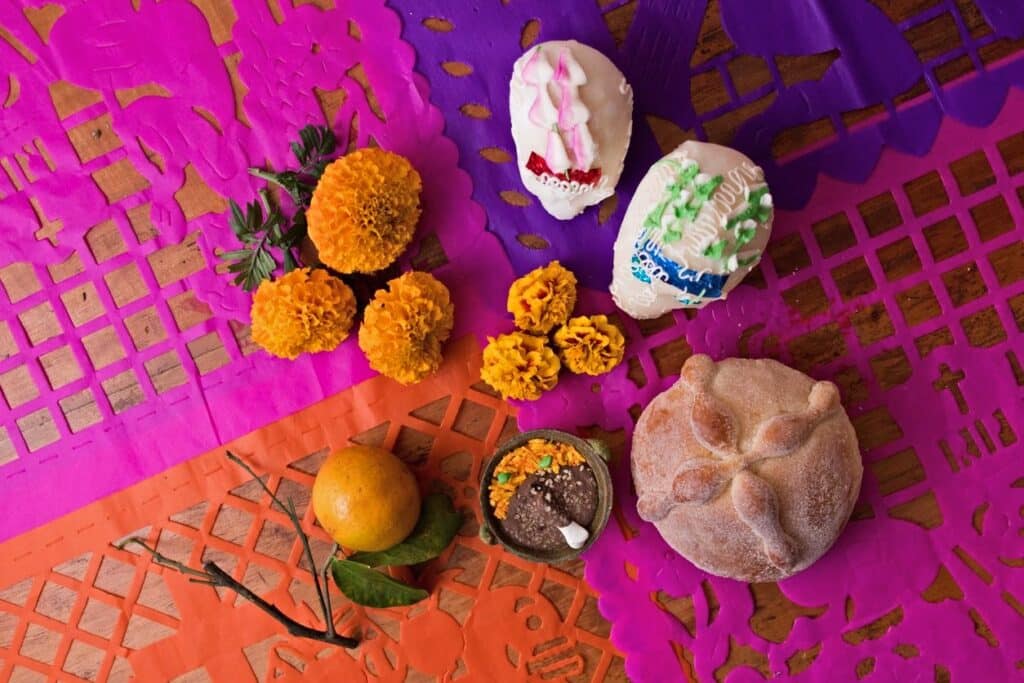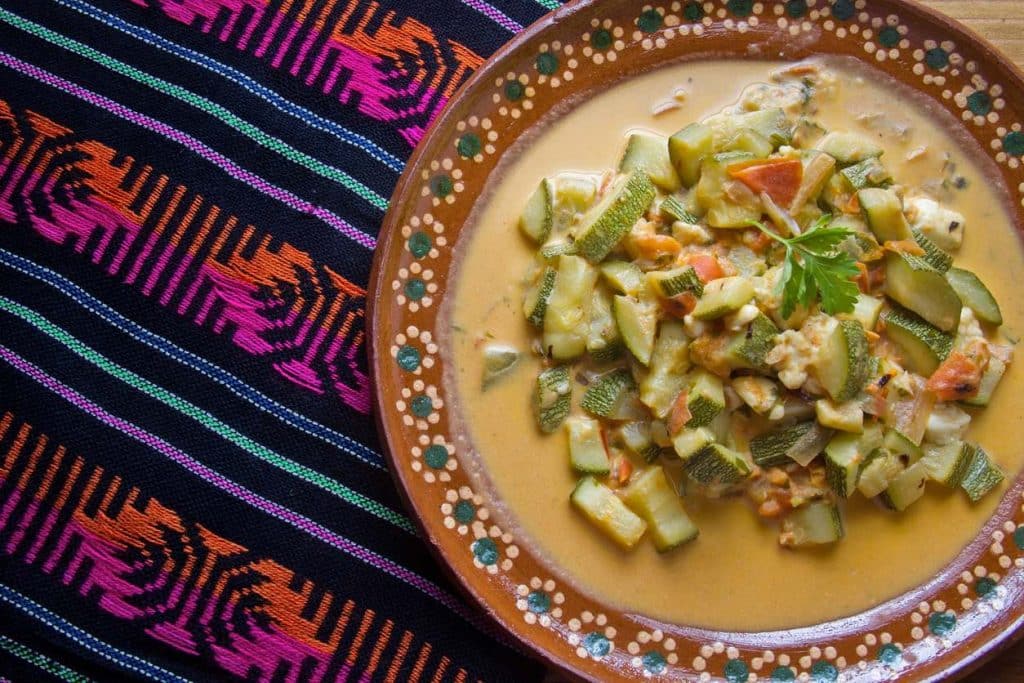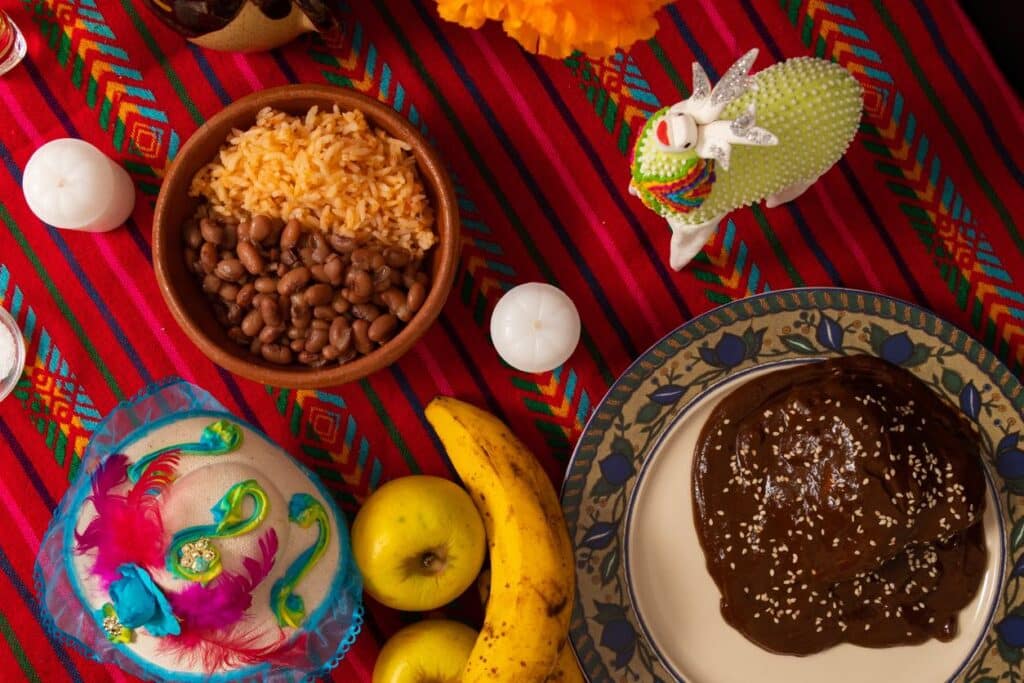
Food and Drink on
Day of the Dead

Food Is Love on Dia de los Muertos or Day of the Dead
Day of the Dead for many Mexicanos in the U.S. is the important holiday this time of year, although Halloween takes front and center. Since the 1970s, more and more of us have been opting into the practice as a way to honor our deceased loved ones, invoke an ancestral tradition, and commune with our heritage.

Vivi’s Day of Dead Tribute: My Abuelita Is “With the Angels”
This is the first Day of the Dead that Vivi Abeja, one of our favorite Mexican cooks, is making an altar for her beloved Abuelita. Elisa Abeja, born in Michoacan, Mexico, died at 92 in Chicago’s Little Village neighborhood this past spring. She and Vivi were kindred spirits in and out of the kitchen. “She is with my grandfather in heaven, with the angels,” says Vivi. “I miss her and she inspires me every day.” Watch Vivi prepare an ofrenda for Day of the Dead that includes 3 special dishes and drinks her grandmother loved, served often, and taught Vivi to make.
Watch Vivi Make Her First Altar
To celebrate the life of her beloved Abuelita, Vivi lays out flowers, photos, candles and 3 very special recipes as ofrendas.
Calabaza en Tacha, a Dulce Pumpkin Dish for the Dead
This time-honored treat has been made on Day of the Dead for centuries. See how Vivi prepares this pumpkin dessert for the ofrenda.
Buñuelos, Everyone’s Favorite Sweet Treat
The best part of making her Abuelita’s cinnamon-sugar buñuelos, Vivi explains, is how simple they are. “This recipe reminds me of family gatherings at my grandmother’s house,” she says
Champurrado: Chocolate Atole to Warm the Soul
A cup of champurrado is served to welcome home the dead. See how Vivi makes her version of this traditional drink with masa harina and chocolate.
How to Make
Pan de Muerto
Pan de muerto is a confection prepared for Día de Los Muertos in Mexico and Mexican households around the world. This traditional bread is baked and presented as an ofrenda for our loved ones who have departed this world. The sweet bread is also enjoyed by the living as they honor and celebrate their dead every November 1 and November 2, usually accompanied by a hot champurrado or Mexican chocolate caliente to keep warm through the night.


For Day of the Dead, a Calabacita Squash Recipe from the Community Garden
The Day of the Dead altar decorations and celebration — with family-favorite dishes like these calabacitas Mexicana — happened spontaneously, delighting and surprising José Germán-Gómez. This community activist is the founder of the New Jersey-based Northeast Earth Coalition, working to protect the environment and promote local sustainability and food security. His mission, vision and daily work is all about championing urban farming projects, community vegetable gardens and backyard food production.
Why Do We Offer Food & Tequila to Dead Loved Ones?

Familia Kitchen sat down with Valentina Prida, a Chicago-based Mexican bilingual therapist, to ask about the healing role of food and drink in Day of the Dead rituals, both in Mexico and the U.S.
Q: Valentina, what is the significance of making food and drink ofrendas for Day of the Dead altars?
A: One of the beautiful things about Day of the Dead is that it is a celebration, rather than a day of sadness. We are celebrating life by acknowledging the death. Which is so different from escaping death. Or ignoring that death happens. We see it, we acknowledge it, we celebrate it.
Another beautiful thing about Mexican culture is that it’s almost like we double down on nostalgia. We don’t shy away from it. We lean into the feeling of grief, the feeling of sadness. And it is bittersweet on a very deep level. We allow ourselves to go there because it is important. Because it matters.
And through allowing ourselves to feel, allowing ourselves to miss the people who are not here anymore, we are moving forward in the process of grief. When someone is in denial, when someone is not talking about it, not remembering, not acknowledging it: They are not really progressing in dealing with the loss of someone who has passed away.
But when you do lean in, even though it is painful, it is also beautiful. Then we have an experience that gets us closer to acceptance.
I think that Day of the Dead gives that to all families. It is an intentional practice that allows for emotions to be expressed. Sometimes we may not have the right words, but we have music, we have food. And we can sit down and have a meal together. That is connecting and gives us a sense of belonging.
Day of the Dead is an intentional practice that allows for emotions to be expressed. Sometimes we may not have the right words, but we have music, we have food. And we can sit down and have a meal together. That is connecting and gives us a sense of belonging … Then we have an experience that gets us closer to acceptance.
—Valentina Prida
Q: Do you make a Day of the Dead altar in your home here in Chicago?
A: I haven’t done it ever since I moved to the U.S. seven years ago. I can tell that I am sitting in a place of I miss my family too much and this is too difficult. So I don’t do it. Sometimes it is easier to turn away than to do the thing that reminds us of home.
It’s easy to say all Mexicans [who live in the U.S.] make Day of the Dead altars, but there is some tension there between incorporating our traditions, while also trying to adapt to a new place. And I think I have been feeling that for the last seven years. It’s a constant journey, and I do think that food is an anchor for that journey.
Q: Is tequila an anchor too?
A: Tequila and mezcal are definitely an anchor!
Drinking has a celebratory intention behind it, and it could also have a grieving intention behind it. We drink when we might want to express a more intense emotion that we don’t know how. Drinking can help. I might be sitting with very deep, deep feelings of sadness, and I don’t know how to express them. If I drink I might be able to let them go a little bit, and cry. And if I do it with my loved ones, together, on Day of Dead, that can be even more expressive. There is a thin line: Alcoholism is deeply embedded in our culture. But there is a place where drinking can be used as a tool to express ourselves.

Q: How do the living choose the dishes they serve as ofrendas to honor their dead on the altar? Is It their most favorite meals and things to drink when they were alive?
Yes, we remember what they liked. So for a lot of people it is Coca-Cola and a tequila and arroz rojo and mole. Some people might bring the actual dish. Some people might have a visual: their altar shows a little picture or representation of it. In Mexico City, my mom has a tiny, tiny altar so she buys a tiny Coke and a tiny mezcal to put on it.
All of these items that you buy or make: You have to really think about that person and that makes you miss them and process their being gone and your grief. It is beautiful.
Q: Do the family and friends then continue this healing and celebratory meal by gathering together to eat the same favorite dishes they made for their dead loves ones?
A: In my family at least, we don’t. We make the favorite foods of the person who we miss, who has died, who is loved. We offer the special meals and drink to our dead. And, according to tradition, during the night, the dead take the food, after the feast. The guests at the feast don’t eat the food that is placed on the altar.
Valentina Prida is a licensed marriage and family therapist. She speaks Spanish and English and is passionate about working with the Latino/Hispanic community. Valentina was born in Mexico City and today lives in Chicago with her family. The traditional dish she misses most from home is chicken with mole.
